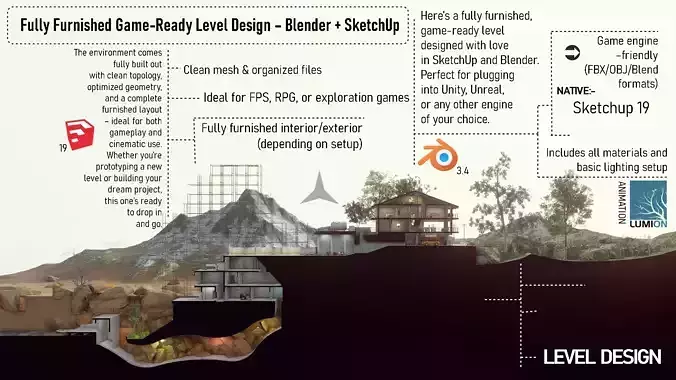1/14
1. Open World vs Linear vs Hub-based
Open World: Skyrim, Breath of the Wild – freedom to explore.
Linear: Final Fantasy XIII – strong narrative direction.
Hub-Based: Dark Souls, Monster Hunter – interconnected zones.
Decide early on how players will move through the world.
2. Level Flow & Player Guidance
Use visual language: landmarks, lighting, paths to guide without UI.
Breadcrumbing: Place interesting objects or encounters that subtly lead players in the right direction.
Mix tight areas (dungeons, towns) with open exploration zones to vary pacing.
3. Modular Design
Build modular kits in Blender (walls, floors, arches, rocks) for faster iteration.
Unity’s ProBuilder can also help in greyboxing your levels quickly.
4. Narrative Integration
Worldbuilding through level design: environmental storytelling (e.g. ruins, battlefields, old notes).
Design quests that tie into the level organically, not just fetch 10 wolves.
5. Combat & Encounter Design
Use level geometry to make encounters dynamic: choke points, cover, verticality.
Space enemies intelligently: ambushes, arena fights, roaming patrols.
6. Puzzles & Exploration
Include hidden areas, locked doors, or lore-rich objects to reward exploration.
Layer puzzles with tools or abilities unlocked later (Metroidvania-style).
7. Progression & Economy
Place loot, XP, and rewards carefully to balance challenge vs reward.
Use environmental cues (like blood trails, glowing chests) to draw attention to rewards.
8. Testing & Iteration
Playtest early and often.
Observe where players get lost or bored.
Block out the level first (greyboxing), then refine visuals.
REVIEWS & COMMENTS
accuracy, and usability.














